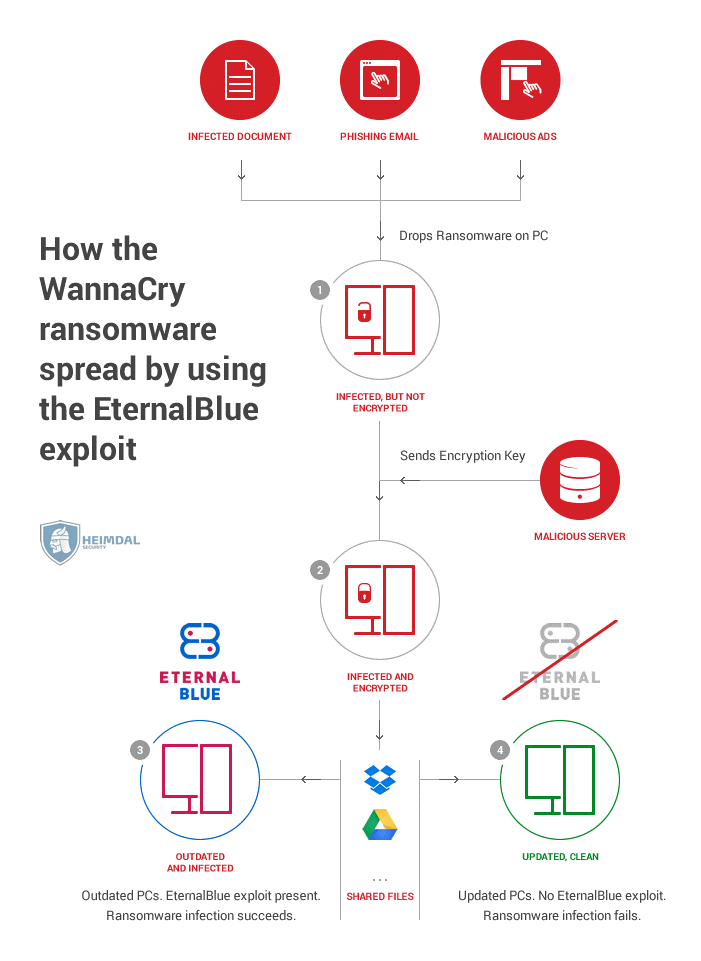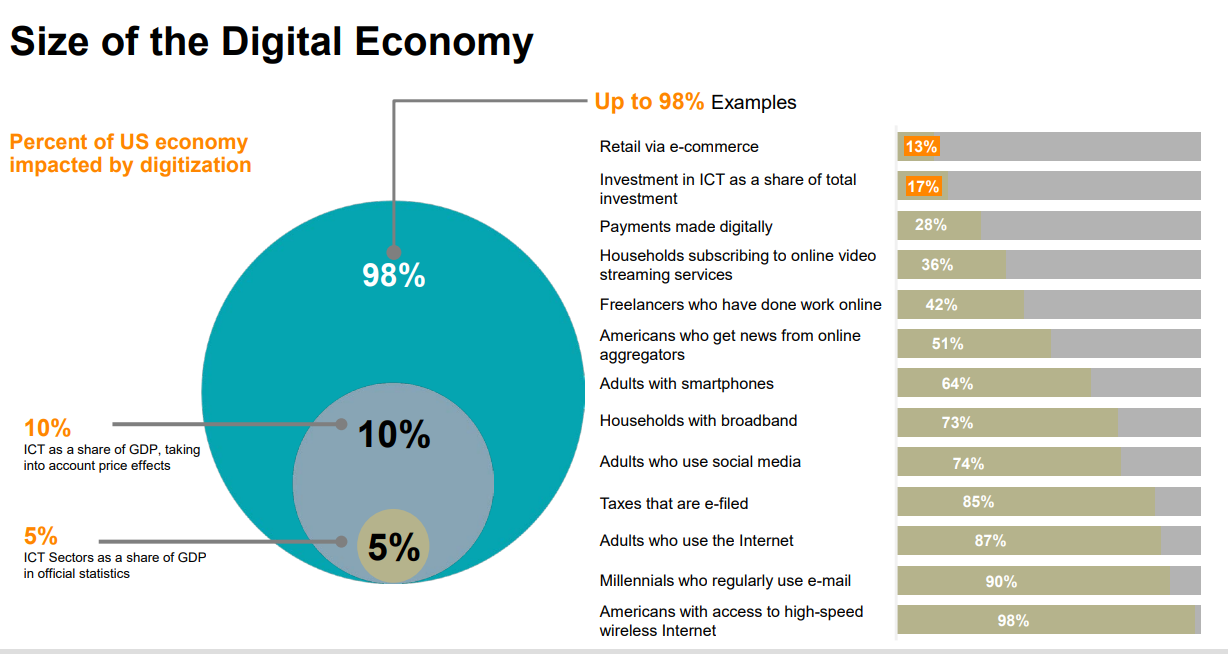The WannaCry ransomware attack, which unfolded on May 12, 2017, has been dubbed one of the most devastating cyber assaults in history, leaving a trail of chaos across the globe. This malware threat, also known as WannaCrypt, infiltrated over 100,000 systems worldwide, crippling critical infrastructures, including the UK’s National Health Service (NHS). As hospitals struggled to access patient records, a stark reminder of the vulnerabilities plaguing modern cybersecurity emerged. Hackers demanded ransom payments in Bitcoin, showcasing the profitable nature of ransomware as a menace in today’s digital age. With this event marking a significant point in ransomware history, organizations worldwide are urged to prioritize cybersecurity measures to prevent future breaches.
The unprecedented cyber event, often referred to as the WannaCry incident, highlights the urgent need for robust digital defenses as countless systems succumbed to the pervasive ransomware strain. Dubbed WannaCrypt, this malware contagion wreaked havoc not only on healthcare institutions but also had widespread implications for several global corporations. The attack served as a wake-up call regarding the importance of cybersecurity and the necessity for constant vigilance against emerging malware threats. As the world continues to grapple with the repercussions of such a significant technological breach, discussions surrounding ransomware attacks and their potential for destruction are more pertinent than ever. Organizations across various sectors must now intensify their efforts to fortify defenses and remain a step ahead in the constantly evolving landscape of cybersecurity.
The Impact of the WannaCry Ransomware Attack
The WannaCry ransomware attack had a massive impact across the globe, drastically affecting not just digital infrastructure but also critical services like healthcare. The UK’s National Health Service (NHS) became one of the most notable victims, as systems were crippled and patient records were held ransom. This incident highlighted vulnerabilities in public healthcare systems, raising significant cybersecurity concerns. Organizations that were slow to react found themselves in a devastating predicament, emphasizing the importance of proactive cybersecurity measures across all sectors.
The consequences of this ransomware attack extended beyond immediate financial loss; the disruption of services caused real harm to patients relying on timely medical care. Furthermore, the attack underscored the pressing need for organizations to adopt comprehensive cybersecurity strategies. A lack of preparedness can lead to catastrophic results, demonstrating how interconnected our global systems are and how one vulnerable node can compromise entire operational frameworks.
Understanding WannaCrypt and Its Origins
WannaCrypt, also known as WannaCry, exploits vulnerabilities in the Microsoft Windows operating system, particularly through the Server Message Block (SMB) protocol. Its origins can be traced back to a hacking tool allegedly developed by the United States National Security Agency (NSA) and leaked by the Shadow Brokers group. This created a perfect storm for the spread of ransomware, with systems worldwide being affected due to unpatched vulnerabilities. Understanding how WannaCry functions is crucial for preventing similar attacks in the future.
The self-replicating nature of WannaCrypt allows it to spread rapidly once it infiltrates a system, highlighting the critical importance of cybersecurity in a world increasingly reliant on digital technologies. Organizations must remain vigilant in patch management and software updates to mitigate risks associated with malware threats like WannaCry. The need for robust cybersecurity strategies is a fundamental takeaway from the history of ransomware attacks, especially as cybercriminals continuously evolve their tactics.
The Necessity of Timely Patching in Cybersecurity
Effective cybersecurity management includes keeping software up to date, which was a significant protective measure that many organizations failed to implement during the WannaCry attack. The release of patches by Microsoft Windows before the attack was a crucial opportunity that organizations must have taken seriously. Timely patching is not merely a recommendation; it is essential for safeguarding systems against known vulnerabilities. Organizations lagging in their patch cycle found themselves at the mercy of cybercriminals.
The lapses in critical updates, especially in sectors heavily reliant on technology, reveal a dangerous complacency regarding cybersecurity protocols. As emphasized by industry experts, organizations such as hospitals and financial institutions must prioritize routine software updates. Instituting a culture of cybersecurity awareness and diligence can drastically reduce the likelihood of falling victim to similar malware threats and avoid costly disruptions.
Learning from the NHS Cyber Attack
The cyber attack on the NHS serves as a stark reminder of the vulnerabilities present in even the most established organizations. This incident revealed that basic cybersecurity hygiene—such as regular updates and employee training—can have significant implications for operational integrity. Health systems must intensify their cybersecurity protocols, re-evaluating their preparedness for potential future attacks on critical infrastructure.
This event has highlighted a clear path forward for the healthcare sector: investing in cybersecurity resources and employee education is critical to build resilience against future threats. The lessons learned from the NHS cyber attack must translate into action, as the healthcare sector cannot afford another lapse that jeopardizes patient care and operational effectiveness. Stakeholders need to champion a cybersecurity-first approach to preserve essential services.
The Role of Cybersecurity Leaders in Mitigating Risks
Chief Information Security Officers (CISOs) play a pivotal role in navigating the complex landscape of cybersecurity. Following the WannaCry attack, CISOs must advocate for the prioritization of cybersecurity measures, including timely patch management and employee training. Their leadership is essential in fostering a culture of vigilance and proactive defense against emerging ransomware threats.
Furthermore, CISOs should actively engage with their teams to develop comprehensive incident response strategies. They must ensure that organizations are equipped not just to respond to attacks, but to understand and predict potential vulnerabilities. In a dynamic threat landscape, the role of cybersecurity leaders cannot be overstated; they are the frontline defenders against the increasing prevalence of advanced malware.
Global Cybersecurity Legislation and Cooperation
The WannaCry incident has underscored the urgent need for an international framework governing cybersecurity regulations. The absence of standardized global laws leaves many organizations vulnerable to cyber threats. Nations must come together to establish common ground in cyber law and collaborate to bolster defenses against such attacks, which have increasingly global implications.
Enhanced international cooperation in establishing cybersecurity protocols can lead to a more robust global response to cyber threats. Countries should take cues from established cybersecurity legislations in regions like Europe and Asia. By promoting information sharing and best practices among nations, a collective effort can be made to reduce the success rate of ransomware attacks like WannaCry.
Investing in Cyber Resilience for the Future
Investing in cyber resilience is essential for organizations across all sectors to withstand and recover from cyber attacks effectively. The WannaCry attack highlighted the catastrophic consequences of outdated infrastructures, particularly within critical services like healthcare. Organizations must prioritize upgrading their cybersecurity systems and protocols, ensuring they are prepared for evolving malware threats.
This shift towards resilience involves not only investing in technology but also in workforce training. Empowering employees with knowledge about cybersecurity threats and safe digital practices is key to minimizing vulnerability. The healthcare sector, in particular, should reassess its investments in IT and disaster recovery plans to ensure that critical services remain uninterrupted in the face of malicious cyber activity.
The Economic Repercussions of Ransomware Attacks
The WannaCry ransomware attack has revealed how cyber-attacks can significantly impact the global economy. The disruption caused by this attack not only affected individual organizations but also led to broader economic ramifications, impacting public trust and financial markets. Understanding the economic repercussions of such malware threats is critical for organizations looking to safeguard their investments.
The financial losses tied to ransomware attacks extend far beyond payout demands; they include recovery costs, loss of productivity, and damage to brand reputation. Companies must assess their risk exposure and invest in robust cybersecurity practices to safeguard against potentially devastating financial consequences. Ultimately, organizations that proactively address cybersecurity issues position themselves not only for protection but for sustainable growth.
Building a Culture of Cybersecurity Awareness
Creating a culture of cybersecurity awareness within organizations is essential to mitigate the risks posed by ransomware and other cyber threats. The WannaCry attack illustrated the vulnerabilities that arise from inadequate employee training regarding potential scams and malware. Regular training and awareness programs can empower employees to recognize threats and take appropriate actions.
By fostering a culture of vigilance, organizations can significantly reduce the likelihood of falling prey to ransomware attacks. Encouraging employees to adopt best practices not only enhances individual responsibility but also strengthens the security framework as a whole. The focus on building awareness is a proactive measure that every organization should prioritize to protect against emerging malware threats.
Frequently Asked Questions
What is the WannaCry ransomware attack and its impact?
The WannaCry ransomware attack, which occurred on May 12, 2017, involved the WannaCrypt worm that affected over 100,000 systems worldwide, including the UK’s NHS, which was severely crippled by the malware. This ransomware exploited a vulnerability in Windows and demonstrated a significant threat to cybersecurity, with hackers demanding ransom in bitcoin for seized data.
How did WannaCry spread so rapidly across networks?
WannaCry spread rapidly by exploiting a vulnerability in the Server Message Block (SMB) protocol used by Microsoft Windows. Once inside a system, it could replicate itself and leap to other connected devices, which made it one of the most prevalent malware threats in cybersecurity history.
What vulnerabilities did WannaCry exploit in outdated systems?
WannaCry primarily targeted outdated Microsoft Windows systems that had not received recent security patches. While Microsoft released updates to protect against this vulnerability in March 2017, many organizations continued using legacy systems (like Windows XP), which left them susceptible to the ransomware attack.
How did the NHS cyber attack connect to the WannaCry incident?
The NHS cyber attack was one of the first major incidents reported during the WannaCry ransomware outbreak. The malware severely disrupted NHS services, affecting patient records and leading to significant operational challenges, highlighting the vulnerability of critical infrastructure to cyber threats.
What steps should organizations take to defend against ransomware like WannaCry?
To defend against ransomware attacks like WannaCry, organizations should maintain current security patches, conduct regular software updates, educate employees about safe cyber practices, implement strong backup solutions, and develop an incident response plan to manage potential cyber incidents effectively.
What lessons were learned from the WannaCry ransomware attack?
The WannaCry attack highlighted the critical importance of keeping systems updated and the need for better cybersecurity measures across organizations. It emphasized the necessity for sectors like healthcare and banking to prioritize IT security, improve patch management, and invest in preventative infrastructure against similar malware threats.
What role did the Shadow Brokers play in the WannaCry attack?
The Shadow Brokers, a hacker group, were responsible for releasing the exploit tools that enabled the WannaCry ransomware to spread. They allegedly obtained these tools from the US National Security Agency (NSA), showcasing the risks associated with outdated cybersecurity practices and intelligence leaks.
What is the significance of WannaCry in the history of ransomware attacks?
WannaCry is significant in ransomware history as it marked one of the largest global cyber attacks, affecting over 100 countries and demonstrating the vulnerabilities in global cybersecurity infrastructure. The attack served as a wake-up call for organizations to invest in stronger security measures and rethink their cybersecurity strategies.
How did authorities respond to the WannaCry ransomware attack?
In response to the WannaCry ransomware attack, authorities and cybersecurity professionals worked to contain the outbreak, revealing temporary ‘kill switches’ discovered in the malware. Organizations were urged to implement safety patches and assess their cybersecurity protocols to prevent future incidents.
Are there ongoing threats related to WannaCry and similar ransomware?
Yes, the threat of ransomware like WannaCry persists as cybercriminals continuously evolve their tactics. Organizations must remain vigilant, regularly update their systems, and train employees on cybersecurity awareness to mitigate the risks of future ransomware attacks.
| Key Point | Details |
|---|---|
| Global Impact | Over 100,000 systems affected worldwide, with significant disruptions in sectors including healthcare and telecommunications. |
| Origin of the Attack | The WannaCry ransomware leveraged vulnerabilities allegedly developed by the NSA, made public by the hacker group Shadow Brokers. |
| Propagation Method | It spreads via the Server Message Block (SMB) protocol used by MS Windows for network file sharing. |
| Patching Issues | Older Microsoft systems, such as XP and Vista, were not initially provided with security patches, leaving them vulnerable. |
| Expert Opinions | Experts stress the critical need for organizations to stay updated on patches and cybersecurity measures to prevent attacks. |
| Future Risks | Experts warn of potential future attacks and emphasize the importance of global cybersecurity laws and resilience. |
Summary
The WannaCry ransomware attack represents a significant turning point in cybersecurity, highlighting the vulnerabilities of critical systems around the world. On May 12, 2017, the attack impacted key institutions, particularly the UK’s National Health Service, and underscored the necessity for timely software updates and robust cybersecurity measures. As we observe the aftermath, it is imperative for organizations to enhance their defenses and invest in resilience strategies to protect against possible future threats, ensuring that they are not caught off guard again.



